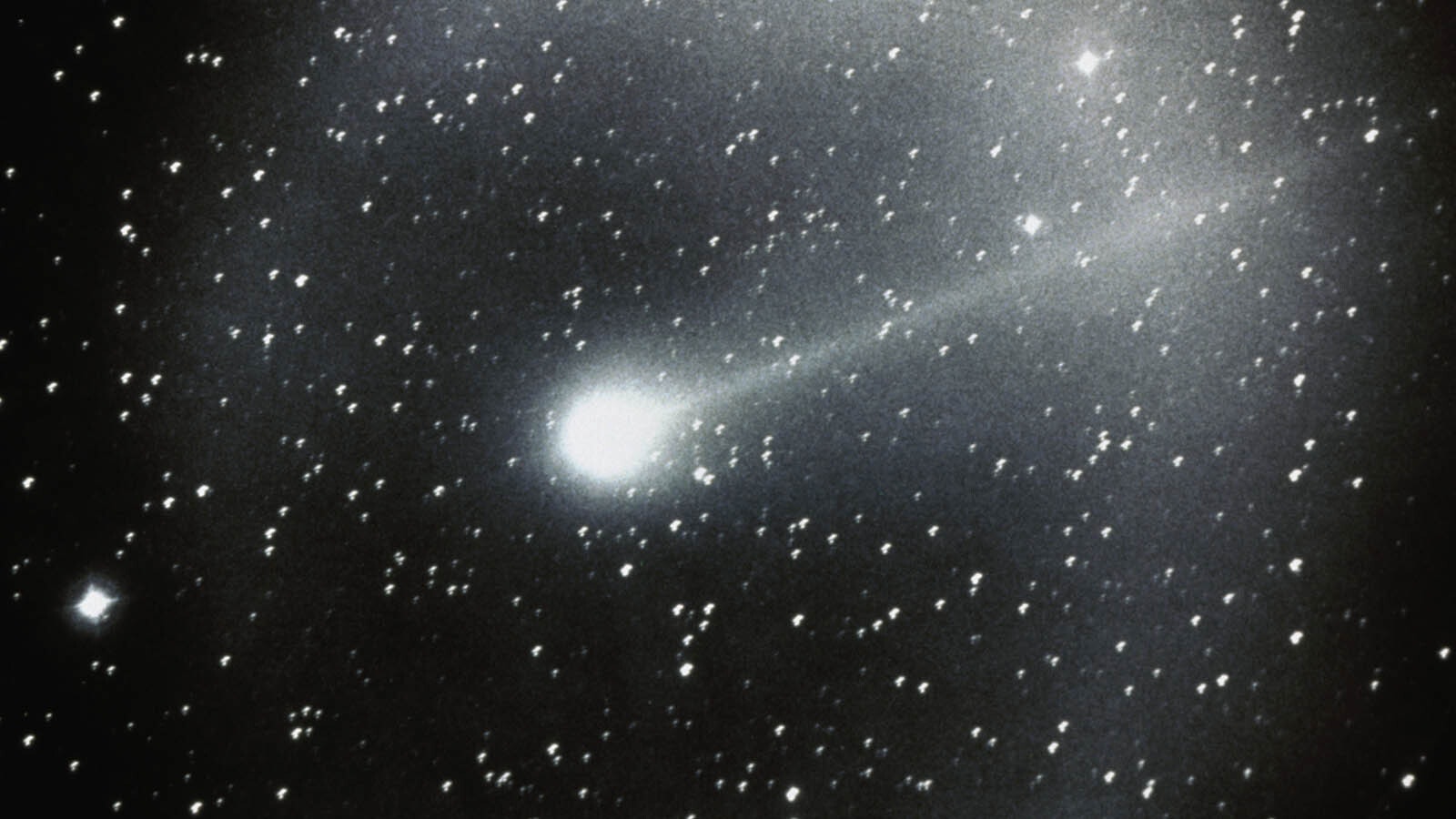You probably didn’t notice, but a generational milestone was reached more than 3.2 billion miles away from Earth a few weeks ago. On Dec. 8, Halley’s Comet reached its farthest distance from Earth and is now hurtling toward our planet once again.
We only have about another 38 years to prepare for its return.
A visit from Halley’s Comet is a once-in-a-lifetime event for most Earthlings — twice if you’re very young when you first see it — since it only happens once every 75-79 years. It flies so close that it’s visible from the planet’s surface without a telescope or binoculars.
But this beautiful and fairly regular hunk of space ice could also be an immensely potent problem if it’s influenced by Murphy’s Law. What are the chances our planet is in the trajectory of Halley’s Comet as it returns this time, and instead of passing close to Earth, it collided with it?
And as long as we’re speculating on things not likely to happen, what if that collision happened at Cheyenne?
If It Did ...
Comets are called “dirty snowballs” since they’re primarily made of dust and “volatile ices” of water, carbon dioxide and ammonia. Getting hit with a snowball can be painful enough, but getting hit with a snowball the size of Halley’s Comet would be many trillion times worse.
The estimated mass of Halley’s Comet is 220 trillion tons, and it’s at least 7 miles wide. As it’s returning to Earth, the comet is traveling around 31 miles per second.
Max Gilbraith, the planetarium coordinator for the University of Wyoming Physics and Astronomy Department, said the impact of Halley’s Comet would be more powerful than anyone can comprehend.
“It (would) have the equivalent energy of 130 trillion tons of TNT,” he said. “Just to put that in context, that is about 14 times the amount of energy of the world’s fossil fuels combined.”
The crater left behind by Halley’s Comet would also be massive. Gilbraith estimated the impact crater would have a radius of around 60 miles. That’s a larger whole than the entire Bighorn Basin.
If Halley’s Comet hit Cheyenne, the crater would reach beyond Chugwater to the north, Laramie to the west, Pine Bluffs east on the Nebraska border, and south just past Loveland, Colorado.
An impact centered on Riverton would reach as far north as Kirby, as far south as Muddy Gap, and almost reach the city limits of Dubois.
A direct hit on Wamsutter would close Interstate 80, at least temporarily. Rawlins, Saratoga, Baggs, and Jeffrey City would be leveled, and Rock Springs would barely avoid becoming Ash Springs (that’s better than a ham sandwich, but not by much.)
As for the global devastation, astronomers don’t need to look far for an apt comparison. The 110-mile-wide Chicxulub Crater in Mexico was created by an extraterrestrial object with slightly less energy than Halley’s Comet, but still enough to end the 160-million-year reign of the dinosaurs.

But It Won’t
Millions of things in space could keep astronomers up during the day (assuming they’re all awake at night). An impact from Halley’s Comet isn’t one of them.
When the comet returns, it will be about 55 million miles away from Earth. That’s close enough to be seen by the naked eye.
By comparison, the moon is 226,000 miles away from Earth. Gilbraith agrees with the vast majority of astronomers that there will be plenty of outer space between us and Halley’s Comet.
Safe for now, Wamsutter.
Through The Millennia
Halley’s Comet was named for the English astronomer and physicist Edmond Halley, who calculated its orbit in 1705. Based on its 1607 flyby, Halley determined that the comet passed Earth every 76 years and predicted its return in 1758.
Halley’s Comet was next seen on Dec. 25, 1758. Halley never knew his prediction was validated, given that he died in 1742.
While the comet was named for Halley, Gilbraith said sightings of the comet have been recorded throughout human history.
“People had seen it before then and recorded it in the sky,” he said. “Life expectancy was quite low before the Industrial Revolution, and very few people could expect to see a comet return every 75 to 79 years or so.”
Astronomers have calculated the trajectory of Halley’s Comet through the millennia and determined the distance between the comet and the Earth can and does change with each visit. Gilbraith said there have been a few closer calls, but no “close calls.”
“The closest approach ever was in the year 837 AD,” he said. “It was only 3 million miles away from the Earth. But to put that in perspective, that's still 15 times further away than the moon.”
Mark Your Calendars
Halley’s Comet last passed Earth on Feb. 9, 1986. The comet reached its perihelion, the furthest point of its orbit, on Dec. 8, 2023.
It took Halley’s Comet 37 years to reach its perihelion. That means the remainder of its 74.7-year orbit will be spent returning to Earth.
Any Wyomingite who wants to see Halley’s Comet should plan to be outside looking up July 28, 2061. A Wyomingite born on the same day of the last visit would be over 75 years old on the anticipated day of its next visit.
Any comet with an orbital period under 200 years is classified as a periodic comet. With a 74.7-year orbit, Halley’s Comet is a short-period comet and the only one visible to the naked eye.
It’s possible to see Halley’s Comet twice in a lifetime. Some Wyomingites reading this story could be among the lucky few in the history of humanity to witness the glory of this massive dirty snowball twice in their lives.
Then again, human eyesight is at its worst in infancy and old age, so is there really a point?
Meanwhile, the rest of the Cowboy State can rest easy knowing that 38 years from now, when Wyomingites are dazzled by the splendor of Halley’s Comet in the pristine night skies of Wyoming, they will be doing it safely from Wamsutter and all other points.

Andrew Rossi can be reached at arossi@cowboystatedaily.com.





